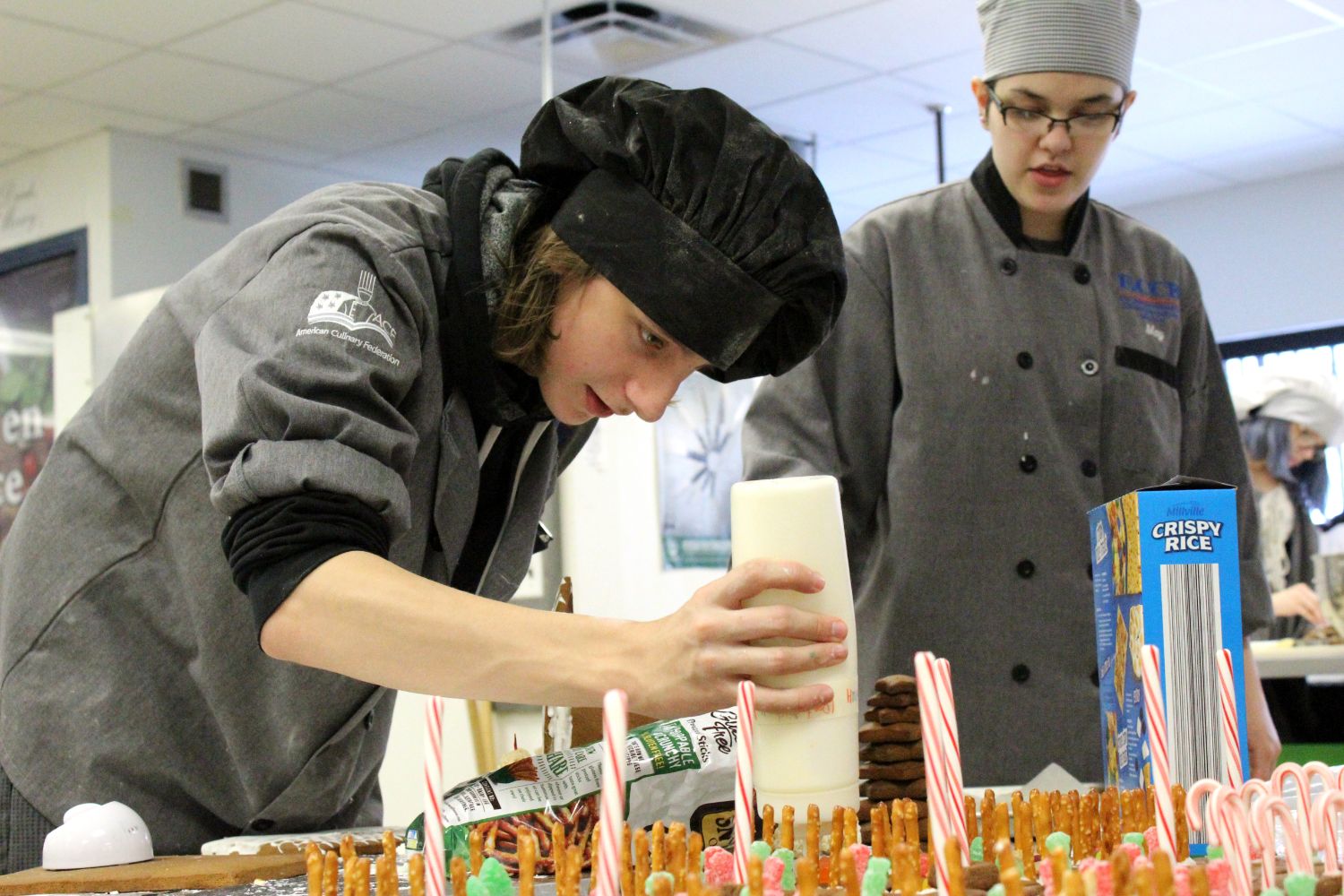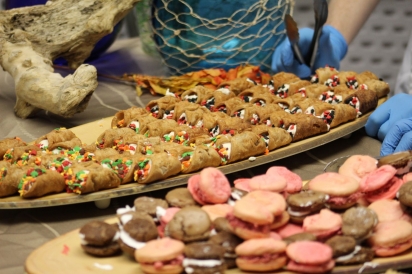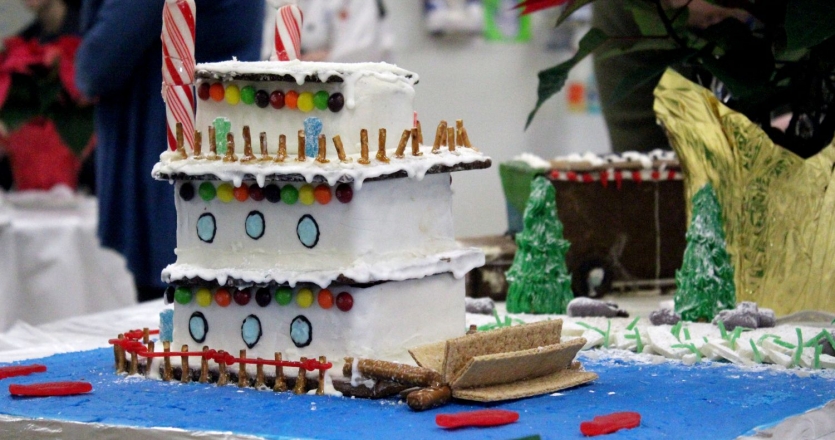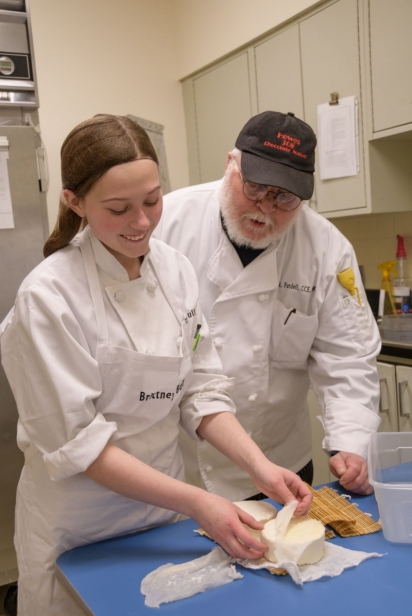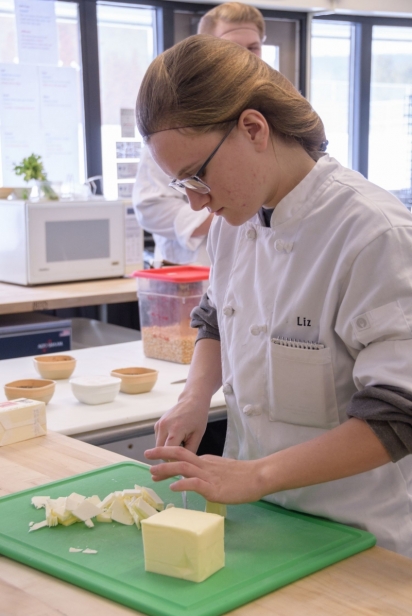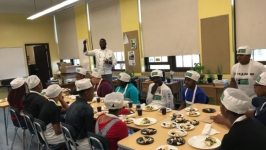BOCES Students Sizzle in the Local Food Scene
High school juniors and seniors of the Erie 2 Chautauqua-Cattaraugus BOCES (E2CCB) Culinary Arts programs are entering the food industry with intention. Educated with an arsenal of kitchen skills, nutritional science and—in many cases—cooking competition experience, the “kids these days” are secret weapons in our beloved restaurants instead of liabilities. E2CCB provides education to students from nine area high schools which span 1,700 square miles of the southtowns. From hip East Aurora to the rolling hills along the Pennsylvania border, four BOCES education centers offer foundations in culinary careers.
Chef Gregory Babcock spearheads the Culinary Arts program at the Ormsby Educational Center in East Aurora. This Culinary Institute of America graduate and his students collaborate with the four other campuses to attend cooking competitions and cater large-scale functions. However, his claim to fame is his ultimate bananas foster recipe, which he passes down to his students each year.
Head 45 minutes southeast to Angola and you will discover the Carrier Educational Center where Chef James Kuras oversees the Culinary Arts program. “We are a ProStart school,” he explains. ProStart is part of the National Restaurant Association, which delivers an educational component to high school juniors and seniors across the country. Students receive training in cooking techniques, business management, food safety and practical restaurant skills. In 2018, Kuras’ team of students earned first place at the New York State Restaurant Association Education Fund (NYSRAEF) ProStart Invitational. “It’s all about the experience,” Kuras says. “We went to nationals five times and took our students to Rhode Island, California and Baltimore.”
Practice for their skills testing takes place after school, inside the most modern kitchen of any BOCES in the state. It includes amenities many of us have only seen on TV: blast chillers, meat curing cabinets, stand mixers, conveyor ovens, woks, panna cotta molds, and smart TV technology for instruction.
Kuras’ students are gaining additional experiences in the industry through catering professional meetings at E2CCB’s central hub. The generated funds help to cover cooking competition expenses. Some profits are invested back into the community when purchasing inventory from local farms and markets. Students are able to see, some for the first time, how food is grown and distributed.
Local restaurants play a major role in teaching WNY’s high schoolers about their trade. By touring hot spots like Pizza Plant, the Roycroft, Rich Products and Father Sam’s, students are building relationships, Kuras says. “They are learning about the industry, the history of the business and franchising. It’s not just about cooking.”
School days at Carrier are kept interesting by teaching conventional subjects with a culinary lens. Kuras explains, “We read [culinary-related] articles and write summaries.” As another writing assignment, “We watch [the movie] Ratatouille and I ask students to critique the food safety of the kitchen and to change the ending.” Students learn math through weights and measures conversion and science through the chemistry of baking. Kuras demonstrates engineering by assigning gingerbread houses inspired by architectural gems. History, culture and cuisine collide when Native American liaisons from the nearby Cattaraugus Reservation present lessons on fry bread and other gastronomic Seneca traditions. “We try to have fun in class. Respect comes from all sides,” Kuras compassionately states. “It’s all for the students.”
South of Carrier, Chef David Caccamise coordinates Fredonia’s Culinary Arts program at the LoGuidice Educational Center. This program's niche is community service centered. Students learn how to cook for a crowd at the Empty Bowls fundraiser which benefits the Northern Chautauqua Community Foundation and its efforts to increase food security for local residents.
Caccamise states, “The kids appreciate the significance of the Empty Bowls Project and know their contribution is meaningful.” Alongside the Chautauqua Area Potters who make the bowls, LoGuidice students prepare three different soups every year. Cooking 20 gallons of each kind, they serve 60 gallons (more than a contractor-sized trash can) of fresh soup at this fundraiser!
During the holiday months, Caccamise shows his flair while teaching gingerbread construction and ice carving. “It’s a nice time of year. We use our creativity, put our thoughts on paper, and see it come together. Not everyone uses the same template. The boundaries of the board are the limit. I have seen students create the Eiffel Tower, tugboats, churches and mountains.”
Sitting near the edge of Chautauqua Lake is the Hewes Educational Center where the Culinary Arts program flourishes under the guidance of Chef Rusty Furdell. He educates students in the dwindling arts of chocolatiering and sausage- and cheesemaking. “We make fresh salami, soppressata, Chinese sausage, andouille and apple chicken sausage. We make our own bacon, mayonnaise, and even our own brown sugar.
Making chocolate from bean to bar is also on the syllabus at Hewes. “We get beans from South America and roast, crack, grind, temper and form the chocolate bars,” explains Furdell. The “Hewes Bar” is a popular treat and sold as a fundraiser within their school.
All four campuses offer students the opportunity to graduate with internship experience. Many find themselves working for large-scale businesses like Disney, Red Lobster, Tops Markets and Rich Products. Students can also be found in locally praised restaurants like the Chautauqua Institution’s Athenaeum Hotel, Ellicottville Brewing Company and Curly’s in Lackawanna.
Chef Furdell advocates for career and technical education. He proclaims, “The world needs BOCES-quality people in trades. We need cooks. We need mechanics. So many kids are steered immediately toward college and life in a cubicle.”
Chef Caccamise adds that “It’s both energizing and challenging with students. It is gratifying to see them eager to learn and some go on to bigger and better things.”
Students who enter any E2CCB Culinary Arts program sign up for an unconventional pathway to success. When they graduate, they earn their high school Regents degree with a technical endorsement on their diploma. The Culinary Arts program offers articulation agreements with several local colleges as well as Johnson and Wales University in Rhode Island. This enables students to get a jump start on their college coursework and begin their higher education journey with some credits already satisfied.
Some BOCES alumni tend to go straight into the restaurant industry as cooks while others find themselves working in baking and pastry. Some enter the hospitality field while others crave more culinary curriculum and pursue food-focused studies in college. Every student leaves with knowledge and experience they can carry with them for the rest of their lives: recipes for their family, teaching tools for their future children, and ingredients that enhance their own traditions.
The labs within the E2CCB campuses allow teenagers to fail in a safe environment. The kitchens at these schools simulate the camaraderie of families in home kitchens. These kids find their niche, many of them unbelievably early. They proudly don houndstooth pants, wearing their chef’s coat like a letterman jacket and their chef’s hat like a crown. Students graduate with options, with choices, and many with jobs lined up.


